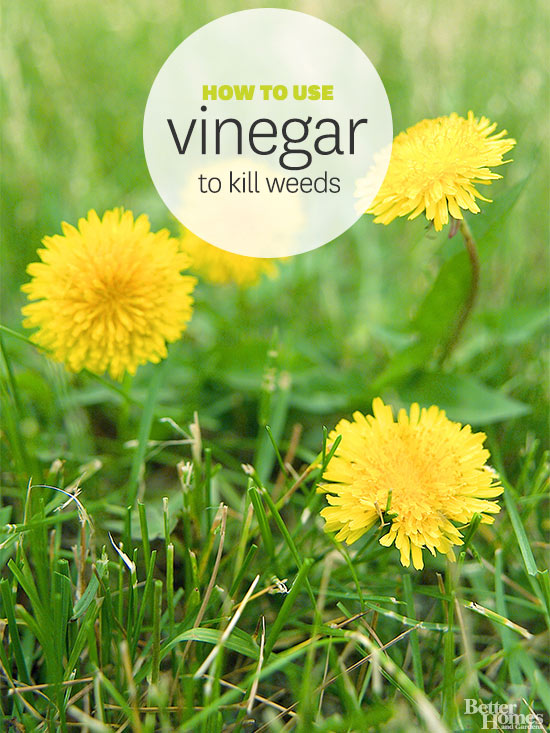






Typical white vinegar in the grocery store is 5% vinegar (acetic acid) and 95% water. While this vinegar can be used on weeds, it has its limitations. It works best on young, annual weeds that are less than two weeks old, and it might require several applications. Give household vinegar a try on weeds that pop up in between concrete seams in sidewalks and driveways. It's usually easy to spray the vinegar in these areas without getting it on other plants.
Household vinegar doesn't work as well on older weeds or perennials. Drenching the roots will likely be required -- fall is a good time to do this -- and even then, it's tough for household vinegar to do the job. For greater effectiveness in getting rid of tough, perennial weeds, a 20% vinegar solution is best. This type of vinegar can be found at garden centers or farm stores. If it's not available, ask the store to order it.
As with any weed killer, select a day that isn't windy or rainy to apply. Wind can carry the vinegar to places you don't want it. Rain weakens it, diluting its effectiveness. In addition, when using higher concentrations of vinegar, follow the safety precautions of other herbicides: Don't get it on your skin or in your eyes, and don't ingest it. Unlike the household vinegar found in grocery stores, the higher concentrated vinegars can burn skin and harm eyes.
Vinegar is nonselective, meaning it will harm other plants and grass, not just the weeds you are trying to kill. If you spray the vinegar onto weeds, make sure it isn't hitting other plants. If that isn't possible, "paint" the vinegar onto the weeds with a brush. Make sure the vinegar has contact with all the foliage. The acetic acid in the vinegar will burn and dry out the leaves.
Copyright © www.100flowers.win Botanic Garden All Rights Reserved